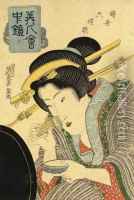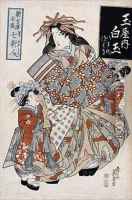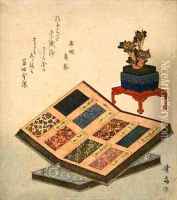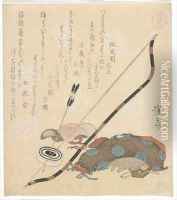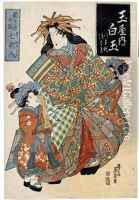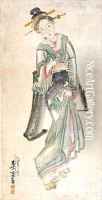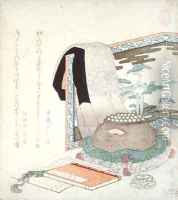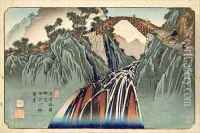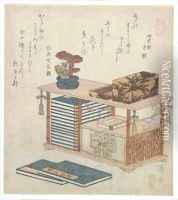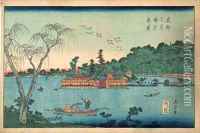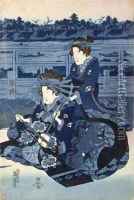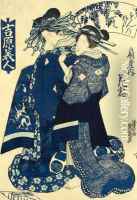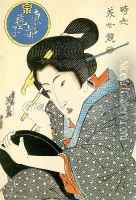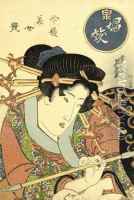Keisai Eisen Paintings
Keisai Eisen was a Japanese ukiyo-e artist who lived during the late Edo period. He was born in 1790 in Hoshiai, Hizen Province (present-day Saga Prefecture). His given name was Ikeda Yoshinobu, and he originally trained to become a Kanō school painter. However, Eisen is best known for his work in the ukiyo-e genre, particularly his bijinga (pictures of beautiful women) and yakusha-e (actor prints).
Eisen was also a talented writer, and he produced a number of books on various subjects including a well-known guide to the Yoshiwara pleasure district. He was not just an artist but also took on other roles, such as a town painter, a teacher, and at times, he ran a brothel, although this latter claim is subject to historical debate.
Throughout his career, Eisen created a wide array of woodblock prints, illustrating the hedonistic lifestyle of the urban culture of Edo (modern-day Tokyo). His style is characterized by rich colors, complex compositions, and a vivid portrayal of the extravagant fashion and leisure activities of the time. He was particularly adept at depicting the intricate patterns of kimono fabric, a signature element of his work.
Eisen's work was part of the ukiyo-e 'floating world' culture, which reflected the interests and aspirations of the growing merchant class in Edo-period Japan. Despite the popularity of his prints, Eisen's life was marked by financial difficulty, and he often moved from one place to another.
After his death in 1848, Eisen's work continued to influence other artists, and he is remembered as a significant figure in the later period of ukiyo-e art history. His prints remain highly valued for their historical and artistic significance, capturing the essence of a period in Japanese culture that was rich in artistry and urban sophistication.
